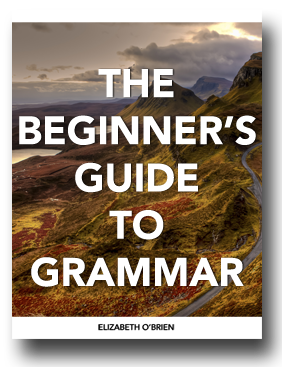📘 Download your free grammar guide here. 📘
📘 Download your free grammar guide here. 📘
What is an exclamatory sentence?
What is an exclamatory sentence?
- Home
- Sentence Types
- Exclamatory Sentences
You might be surprised (and maybe a little bit confused) to learn that there are two ways of defining exclamatory sentences.

We can define them based on their function, and we can define them based on their form.
Let's learn more about each one! Little Red Riding Hood will help us in just a moment.
1. Exclamatory in Function
The most common way of defining exclamatory sentences is by function (purpose). From this perspective, a sentence is exclamatory if it ends with an exclamation mark. The exclamation mark indicates strong emotion.
Myra had the baby!
I can't wait to go to Grandma's house!
Shut the door!
Who does he think he is!*
All of those sentences have the same function: to express strong emotion. They all end with an exclamation mark.
* Who does he think he is! Although this sentence is written in the form of a question, the exclamation mark indicates that the sentence's function is exclamatory. The writer or speaker is showing the strong emotion of exasperation and isn't really expecting an answer.
2. Exclamatory in Form
Another way of defining exclamatory sentences is by form. Form has to do with a sentence's word arrangement.
To be an exclamatory sentence in form, sentences must begin with what or how, be non-interrogative, and contain a shift in the typical word order.
What a lovely day it is!
What an amazing game we had!
How beautiful the budding trees are this spring!
Notice that the word order seems a bit odd and that although these sentences begin with what and how, they are not asking questions. How strange these sentences are! :)
Writing Tip

Writing sentences that are exclamatory in form gives you a way to highlight the complement (predicate noun, predicate adjective, or direct object) of the sentence rather than the subject.
When Little Red Riding Hood walks into her grandmother's house to find a wolf dressed up as her grandmother, she used many exclamatory sentences to show her surprise in the change of her "grandmother's" features.
What big ears you have!
What big eyes you have!
What large hands you have!
What a terrible, big mouth you have!
Notice that in all of those sentences, we're focused more on the complements (ears, eyes, hands, mouth) than the subjects (you).
Typically, sentences have subjects before complements, but these sentences have the complements before the subjects.
If you're defining sentence types based on form, the following sentences would not be exclamatory.
1. I can't wait to go to Grandma's house!
2. Shut the door!
3.Who does he think he is!
The first sentence is declarative in form, the second is imperative in form, and the last one is interrogative in form. In function, however, they're all exclamatory. Here is a sentence diagram of a sentence that is exclamatory in form. We don't show any end punctuation in sentence diagrams.

What big ears you have!
The word what in these sentences is called an exclamatory determiner. Doesn't that sound fancy?
Avoid Them In Formal Writing
If you're writing anything formal, you should avoid using exclamation marks altogether unless they're a part of a quotation.
If you'd like to teach or learn grammar the easy way—with sentence diagrams—check out our Get Smart Grammar Program.
It starts from the very beginning and teaches you grammar and sentence diagramming in easy, bite-size lessons.

Hello! I'm Elizabeth O'Brien, and my goal is to get you jazzed about grammar.
This is original content from https://www.english-grammar-revolution.com/exclamatory-sentence.html
Our Free Guide Gives You A Fun Way
To Teach And Learn The Basics v

Elizabeth O'Brien is the creator of Grammar Revolution.
Her lessons are guaranteed to give you more confidence in your communication skills and make you smile. :)
Other Helpful Resources
- This isn't really a resource, but it's a fun Seinfeld clip. :)

